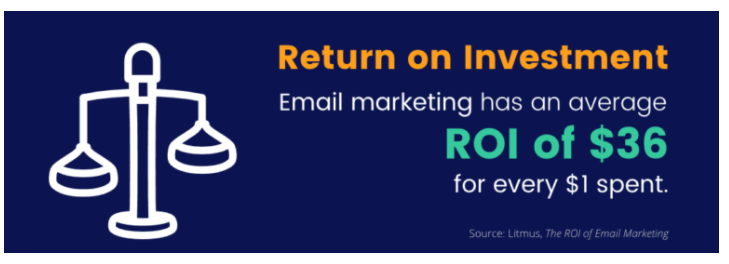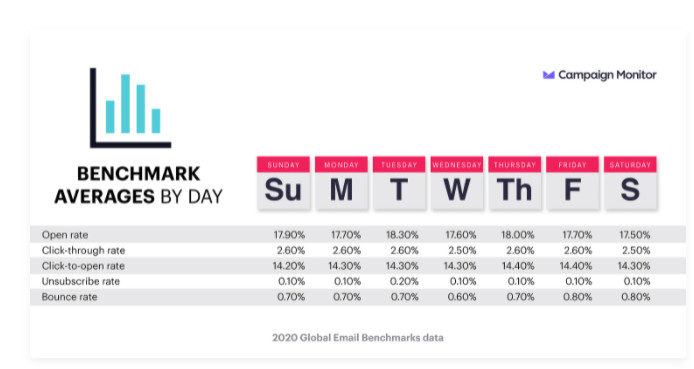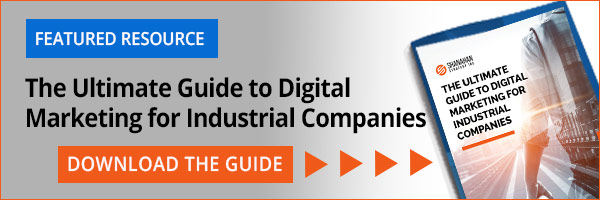Since the first email ‘blast’ in 1971 from Gary Thurek, email has become a critical channel for marketers to reach target audiences with timely and relevant messaging. When it comes to email marketing for manufacturers, you have exclusive access to your customer’s inbox and the ability to build authority through impactful content.
Manufacturing can no longer ignore the impact that email marketing can have on your return on investment (ROI). After all, with experts predicting that over 4.6 million users will use email by 2025, the foundational channel allows you to connect with customers and prospects to convert into deals.
Ready to learn the tricks and tips for B2B email marketing? Let’s dive in!
Key Takeaways:
- Email marketing offers a high ROI compared to other digital marketing tactics
- You can boost sales, increase lead flow, and build authority with personalized campaigns
- Providing valuable and educational content helps you engage with recipients and lead to better results
Is Email Marketing for Manufacturers Important?
On average, email marketing results in a 1.22% conversion rate. While one sale per 100 emails doesn’t immediately sound like a great deal, you must consider that you’re not paying for clicks or impressions but instead delivering branded messages directly to someone’s inbox. In reality, the average email ROI for every $1 spent is $36, which is significantly higher than pay-per-click ads.

ALT: Email Marketing Results in ROI of $36 per $1 Spent
Email marketing is a highly ranked channel for manufacturing companies because you can reach hand-raisers interested in your services and automate the entire process. Running a lean marketing team allows you to streamline and simplify your operations while not sacrificing the customer experience.
Top Benefits for Email Marketing
With 99% of consumers checking their emails daily, 40% of B2B marketers believe that email marketing is critical to their overall success. Emails are so successful for businesses because they’re accessible, customizable, and offer a platform on which most consumers are willing to connect with brands.
When you create a successful email marketing strategy, you could experience the following benefits:
- Collect valuable customer feedback through surveys to help you improve
- Boost sales through automation and increase touchpoints for your reps
- Generate traffic to your website or other content platforms
- Increase leads by funneling prospects to your newsletter or resource articles
- Stay on budget – all you need is a graphic designer and copywriter!
- Build authority with your audience by providing helpful content
- Own your media and database contacts
Types of Emails to Send Manufacturing Customers
While email marketing has substantial benefits, it’s essential to understand that you can’t just send random emails for your strategy to be successful. Instead, you need to deliver strategic messaging that targets your audience’s needs and offers value on a regular cadence.
To get started, here are a few examples of emails manufacturing companies can send:
- Welcome and onboarding emails
- Newsletters
- Product or service announcements
- Product support, guides and how-to materials
- Case study and testimonial emails
- Lead nurture campaigns
- Transactional trigger emails
- Churned or re-engagement lead emails
- Review and testimonial requests
Historically, there is no evidence supporting the ‘best day’ to send your manufacturing emails. While open rates are slightly higher on Tuesdays, you should instead focus on sending emails between 7:00 AM and 9:00 AM for a more significant impact. However, it’s more important to focus on your audience’s analytics and adjust to their needs instead of sticking to a strict regimen.

7 Tips for Creating a Successful Email Marketing Strategy for Manufacturers
Whether you’re hoping to build brand awareness, nurture new prospects, or engage with customers who are in the cycle, here are a few tips that will help you take your email marketing strategy to the next level:
1. Choose the Right Email Marketing Software
Before getting started, you need to select the right email marketing software that will allow you to scale your database, segment audience lists, and send automated email campaigns. Additionally, the software will enable you to analyze and track data so you can discover which types of emails your audiences prefer.
Depending on your needs and current marketing technology stack, you may want to choose a standalone platform or a customer relationship manager (CRM) that’s more integrated with your data.
A few options include:
- Mailchimp
- ActiveCampaign
- MailerLite
- Hubspot
- Marketo
- Moosend
- Drip
2. Build a Quality Email Database
If you’re starting with email marketing, building a contact database to collect, store, and send information to is an essential step. You’ll want to build a list of qualified contacts who actively engage with your emails by opening, clicking, and taking action to drive real results.
While you may want to buy an email list, it’s never a good idea, especially for B2B manufacturing contacts. The main benefit of email marketing is to communicate with contacts who are already interested in your company, so quality trumps quantity here. Instead of purchasing a database, consider acquiring qualified recipients through these strategies:
- Include a pop-up or footer CTA on your website for users to subscribe
- Collect contact information from tradeshow or event attendees
- Create gated content, like eBooks or whitepapers, that users can download after providing their email
- Promote your email newsletter in other content channels such as social media, press, and blogs
3. Segment and Personalize Every Email
Once you’ve built a reputable email list, you need to segment the contacts into separate lists based on specific criteria like purchase history, location, and more. Instead of sending mass emails to your entire database, segmentation allows you to speak directly to each audience member’s needs and deliver messaging that provides real value.
Here are a few ways to segment your email list:
- Geographic location
- Product or service interests
- Industry or market segment
- Grouped content interests (i.e., attended a webinar or downloaded a whitepaper)
- Buying behaviors
Next, cultivate specific emails that cater to the list’s challenges and paint your brand as the solution. For example, imagine that you manufacture hurricane shutters. You would want to send emails to specific distributors in hurricane states during hurricane season to provide relevant and timely emails. If you blasted a hurricane email to someone in the Midwest, it could feel like you don’t know or care about your customers.
4. Write an Enticing Subject Line
The truth is, people will judge your email subject lines. With the average consumer receiving 120 emails per day, your emails need to stand out in the inbox to grab someone’s attention and entice them actually to open it.
Depending on the email’s objective and subject matter, it should include urgent language, personalization like a first name, be relevant, and say something unique. Now, that’s a tall order to fit into 40-50 characters or less, so you’ll want to get creative with the following tips:
- Keep it short and sweet with a focus on the mobile experience
- Use your company or sales rep as the sender name
- Insert personalization tokens wherever possible
- A/B test your lines with the same segment
- Avoid any false promises
- Set expectations like including a video or eBook
- Start with action-oriented words
- Use numbers or statistics to make a point
5. Provide Valuable Content
Your email needs to include valuable B2B content to improve engagement. In manufacturing, your audience expects authority and educational content to help them use your products or do their jobs better. Therefore, your emails should focus more on education and less on making a sale to boost your credibility.
From a layout perspective, consider using a modular design that allows you to provide multiple clickable resources for readers to enjoy. Here are a few ideas to help you build the content matrix:
- Recent blogs or press
- Industry trends and news
- Service and product insights
- Video tutorials, best practices, and tips
- Case studies, testimonials, or reviews
- Company news like upcoming events
6. Drive Contacts to Take Action
You always want to give your email recipients something to do once they open your email. After all, the whole purpose of email marketing is to provide value and convert contacts into loyal customers. By including a CTA in each email, contacts will be more likely to explore your website and engage with your content in the future.
The CTA should direct back to your website depending on the email objective. You can choose to send users to a specific landing page with a form, sales funnel, or content resources.
7. Streamline Processes with Automation
Savvy manufacturers often utilize email automation to send emails without needing to push ‘send’ every time. Typically included in your email technology platform, automation helps you save time and streamline the entire process to ensure you strategically send emails at the right time, to the right people, with the right content.
Email automation also allows you to improve the customer experience. In some instances, email automation works by triggering the following email based on the contact’s user behavior. For example, once someone attends a webinar, they receive a welcome email connecting them to longer lead nurturing materials.
Grow Your Business with Email Marketing for Manufacturers
If you’re looking to engage with your audience, investing in email marketing is a great way to provide educational and valuable content that helps convert contacts into long-term customers. While many manufacturers are stuck using aged marketing strategies, email marketing allows you to reach your audience and help boost your ROI.
Ready to grow your email marketing strategy? Get started with Shanahan Strategy Inc.

